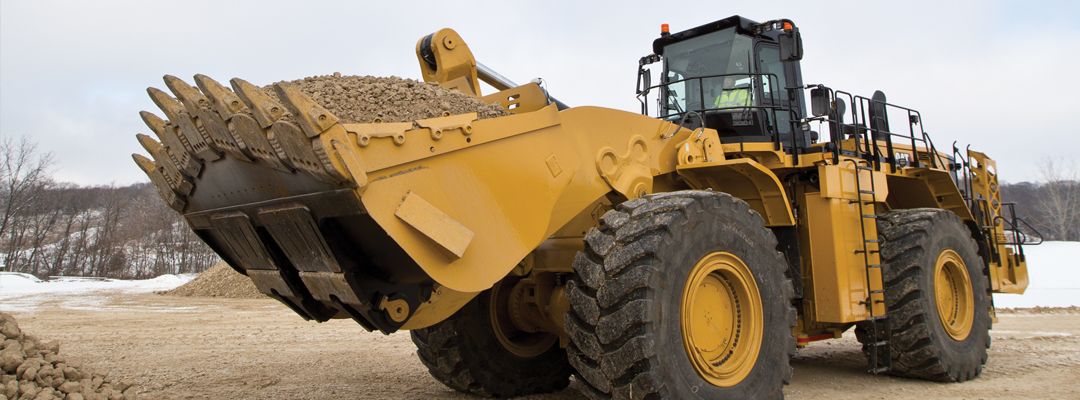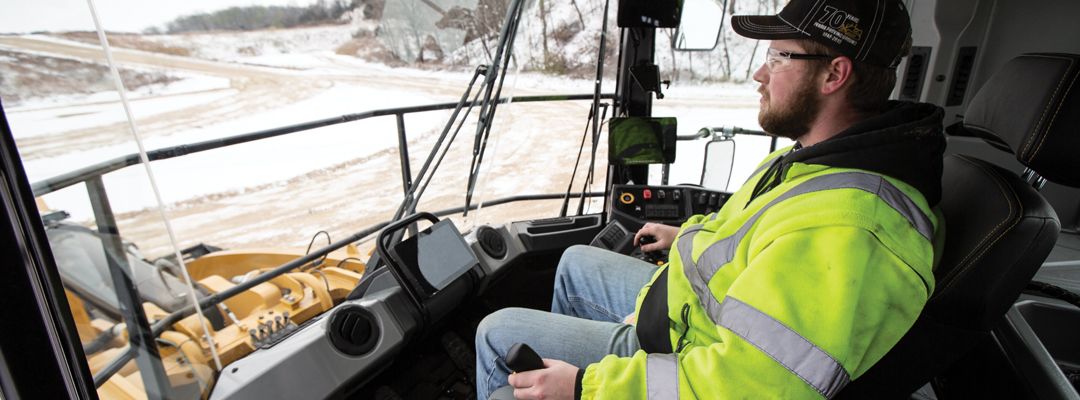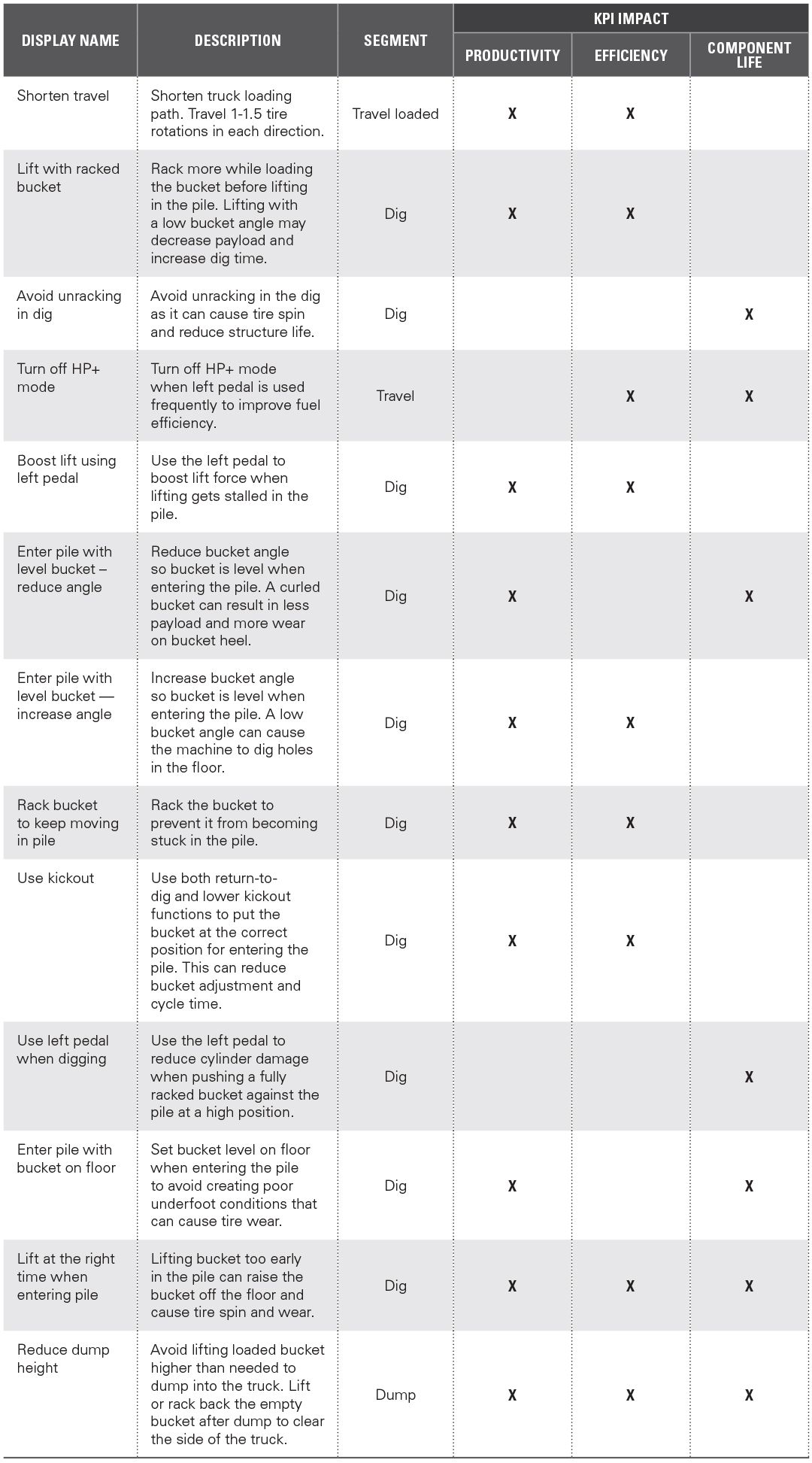

Sign In
Welcome! Sign In to personalize your Cat.com experience
If you already have an existing account with another Cat App, you can use the same account to sign in here
Register Now
One Account. All of Cat.
Your Caterpillar account is the single account you use to log in to select services and applications we offer. Shop for parts and machines online, manage your fleet, go mobile, and more.
Account Information
Site Settings
Security
CAT® 992 WHEEL LOADER: TAKING PRODUCTIVITY AND EFFICIENCY TO THE NEXT LEVEL

The new Cat® 992 Wheel Loader is up to 32% more productive and 48% more efficient than its predecessor. But what if you could take those efficiency and productivity gains even higher?
John Marek, Caterpillar Product Application Specialist, says you can — with the 992’s Operator Coaching features, Cat Payload with Overload Protection, and the 992’s New Autodig Components, which enable partial automation of digging.
“These optional features have been demonstrated to benefit both new and experienced operators,” said Marek. “The efficiency gains that are possible with the new 992 do not depend on these technologies — but at the same time these features can help a larger group of operators to actually achieve the full efficiency potential of the machine.”
Operator coaching helps empower operators to exceed productivity and efficiency targets by measuring and providing feedback to reinforce proper operating techniques. New Autodig Components offer automation features that provide additional improvements in efficiency.
“These features enable forces and motion to be used for useful work rather than waste heat or wear and tear — improving efficiency in the process,” said Marek.
NEW AUTODIG COMPONENTS
The 992 offers three New Autodig Components: Tire Slip Prevention, Tire Set and Lift Stall Prevention. These features automate three of the most difficult parts of the dig cycle in both re-handled and tough digging applications — delivering additional increases in productivity and efficiency while also improving tire life through reduced wear. These components can be individually enabled or disabled on the touchscreen display in the cab.
Tire Slip Prevention
Tire Slip Prevention reduces rimpull when the tires are not set and increases rimpull when downward force is applied to the tire. This feature prevents tire slip before it happens, improving tire life and enabling better dig performance.
Tire Set
Tire Set detects pile contact and automatically lifts against the pile to set the tires, increasing available traction. It also reduces rack velocity before tires are set. This feature reduces tire slip and wear and enables better dig performance.
Tire Set improves dig efficiency for novice operators, and at the same time is designed to support expert operator techniques without getting in the way. When the feature is enabled, expert operators can continue to set the tires themselves or choose to take advantage of the feature to reduce operational effort.
Lift Stall Prevention
Lift Stall Prevention enables automatic management of rimpull to prevent hydraulic stall while lifting up through the face. The result is less time spent in the pile.
This feature detects raise stall events in dig and automatically reduces rimpull where appropriate to increase the upward breakout force and keep the bucket moving. The feature returns rimpull when the stall condition is removed.
Lift Stall Prevention can assist with a more consistent lift velocity depending on the material and reduce wasted energy in a dig. In some cases it may mitigate the need for the operator to use the impeller clutch to reduce rimpull.

PAYLOAD OVERLOAD PREVENTION
Payload Overload Prevention inhibits an overloaded bucket from being raised to full truck height. The system can be configured to either slow down or bring the raise function to a controlled stop when a configurable payload value is exceeded. This prevents operators from being able to overload the machine. The system resumes normal operation once the excess load is dumped.
During configuration, the system provides a payload recommendation based on the linkage type, machine application and calibrated bucket weight. The maximum payload can be set within the password-protected service mode to any value.
“In situations where there is unavoidable variation in density of the material, Overload Prevention gives you the confidence to use a large enough bucket to achieve the target pass match — and therefore productivity — across a density range without introducing the risk of overload,” said Marek. “For example, this means you can use a larger bucket to consistently 4-pass load the truck, versus using a smaller bucket that varies from 4 to 5 passes depending on density.”

OPERATOR COACHING
Operator Coaching is a computer system that detects specific coaching opportunities and provides corresponding tips for the operator through an in-cab display. Video tutorials show the issue and then illustrate the recommended way to perform the task. Improvement progress is tracked in a performance summary. These improvements can lead to increases in productivity and efficiency and can extend component life.
“This is a great tool for both new and experienced operators,” said Marek. “It leads to more productive work, less wear and tear on the machine, and a reduction in the human source of variation in operations.”
Existing machine sensors are used to measure the operator’s technique, which means that there are no additional failure points or maintenance items added by the system.
When asked about improvement opportunities immediately after loading the first truck and seeing coaching tips on a practice screen, one operator commented, “Typically operators would not do that. They do not know what is wrong even though they want to do well. The system is fantastic.”
A skilled operator with 20 years of experience operating primarily loaders said he believes he has improved thanks to the Operator Coaching feature and commented that he appreciates the video tutorials. “The videos showing right vs. wrong are awesome!” he said.
The table below outlines the 13 available coaching points, the loading segment in which they apply, and the Key Performance Indicators that can be impacted by improvements in these areas. The description portion of the table is the recommendation made to the operator.

Operator Coaching is a great tool to enhance collaboration between trainers and the operators, Marek said.
“In the past, we could measure the production and efficiency results but not how the operator got there. Now we can measure aspects of the operator’s technique in order to provide feedback,” he said. “The trainer can then return to the job after a period of time and review the individual results report with each operator until they are fully proficient. This is an exciting way to take training to the next level.”
A Caterpillar study that measured an operator loading 777 trucks before and after coaching showed that after using the coaching feature, the operator loaded 14% more tons per hour and consumed 3% less fuel, for an efficiency improvement of 19% in tons moved per gallon.



